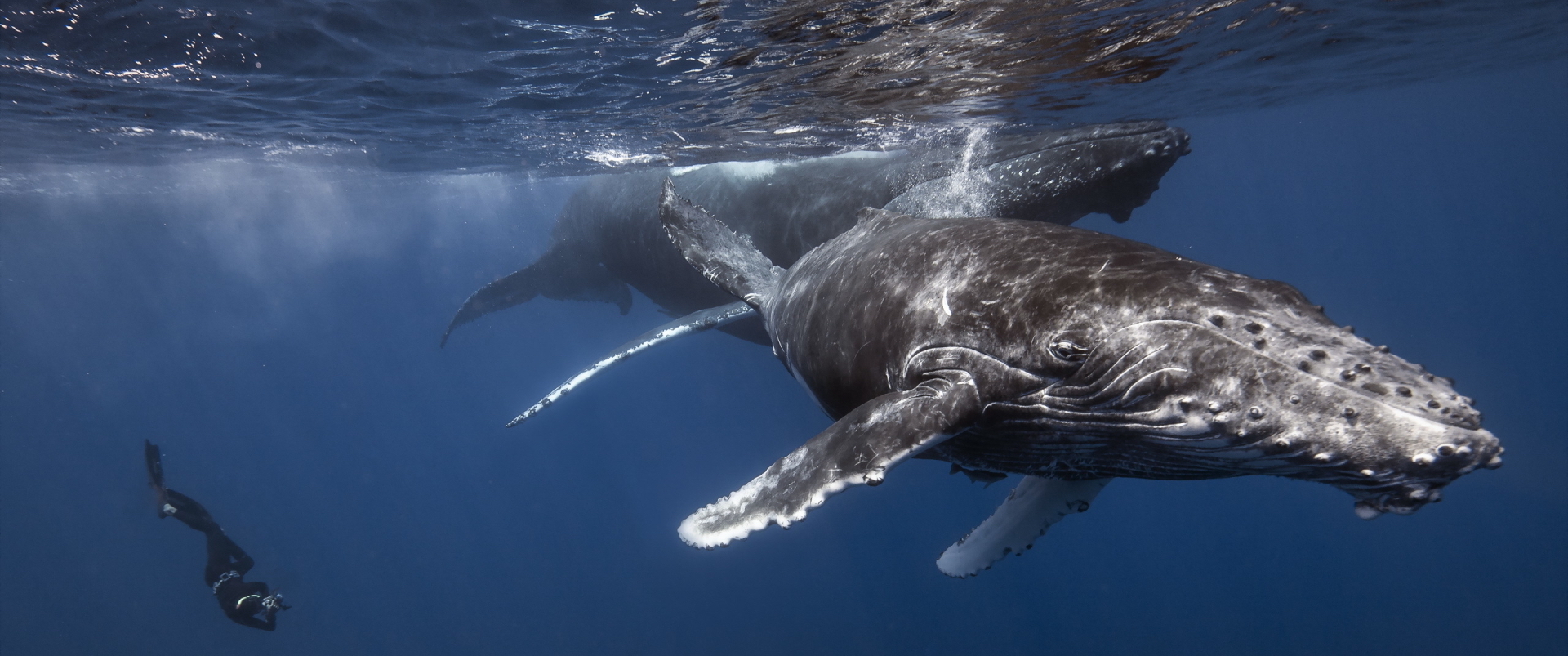
It is difficult to argue with the assertion that it is nature that has the most vivid imagination. Each of the representatives of flora and fauna has its own unique, and sometimes even strange features that often do not fit into our heads. Take, for example, the same mantis shrimp. This predatory creature is capable of attacking the victim or the offender with its powerful claws at a speed of 83 km / h, and their visual system is one of the most difficult ever studied by man. Mantis crayfish, although furious, but not very large - up to 35 cm in length. The biggest inhabitant of the seas and oceans, as in the whole planet, is the blue whale. The length of this mammal can reach more than 30 meters and a weight of 150 tons. Despite the impressive dimensions, it is difficult to call blue whales formidable hunters, as they prefer plankton.
The anatomy of blue whales has always interested scientists who want to better understand how such a huge organism and organs work in it. Despite the fact that we have known about the existence of blue whales for several hundred years (since 1694, to be more precise), these giants have not revealed all of their secrets. Today we will meet with you a study in which a group of scientists from Stanford University developed a device with which the first records of the heart beat of a blue whale were obtained. How does the heart of the lord of the seas work, what discoveries have scientists made, and why cannot an organism exist larger than a blue whale? We learn about this from the report of the research group. Go.
Research hero
The blue whale is the largest mammal, the largest inhabitant of the seas and oceans, the largest animal, the largest whale. What can I say, the blue whale is really the most from the point of view of dimensions - a length of 33 meters and a weight of 150 tons. The figures are approximate, but no less impressive.
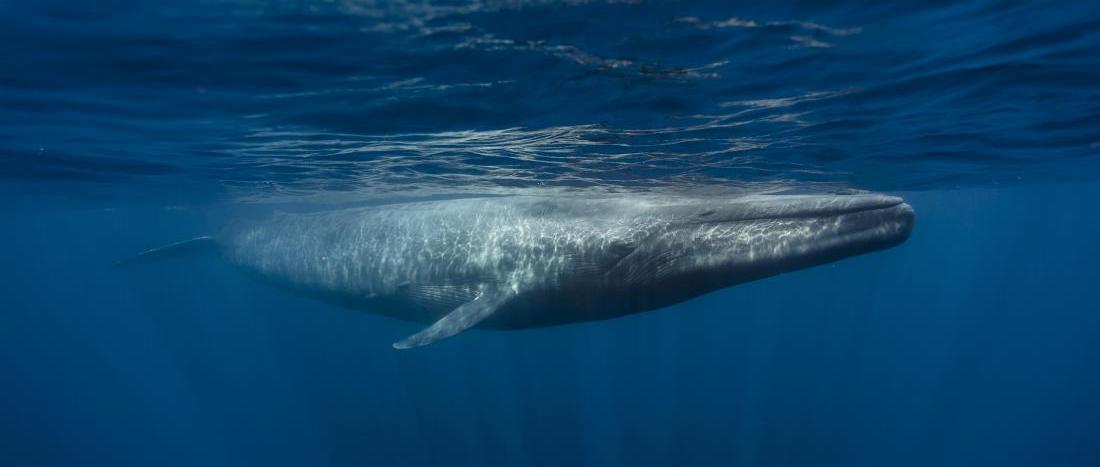
Even the head of this giant deserves a separate line in the Guinness Book of Records, since it occupies about 27% of the total body length. At the same time, the eyes of blue whales are small enough, no more than grapefruit. If the whale's eyes are difficult for you to see, then you will notice your mouth right away. The mouth of a blue whale can accommodate up to 100 people (a creepy example, but blue whales do not eat people, at least intentionally). The large size of the mouth is due to gastronomic preferences: whales eat plankton, swallowing huge volumes of water, which they then release through a filtering apparatus, filtering food. Under fairly favorable circumstances, a blue whale absorbs about 6 tons of plankton per day.
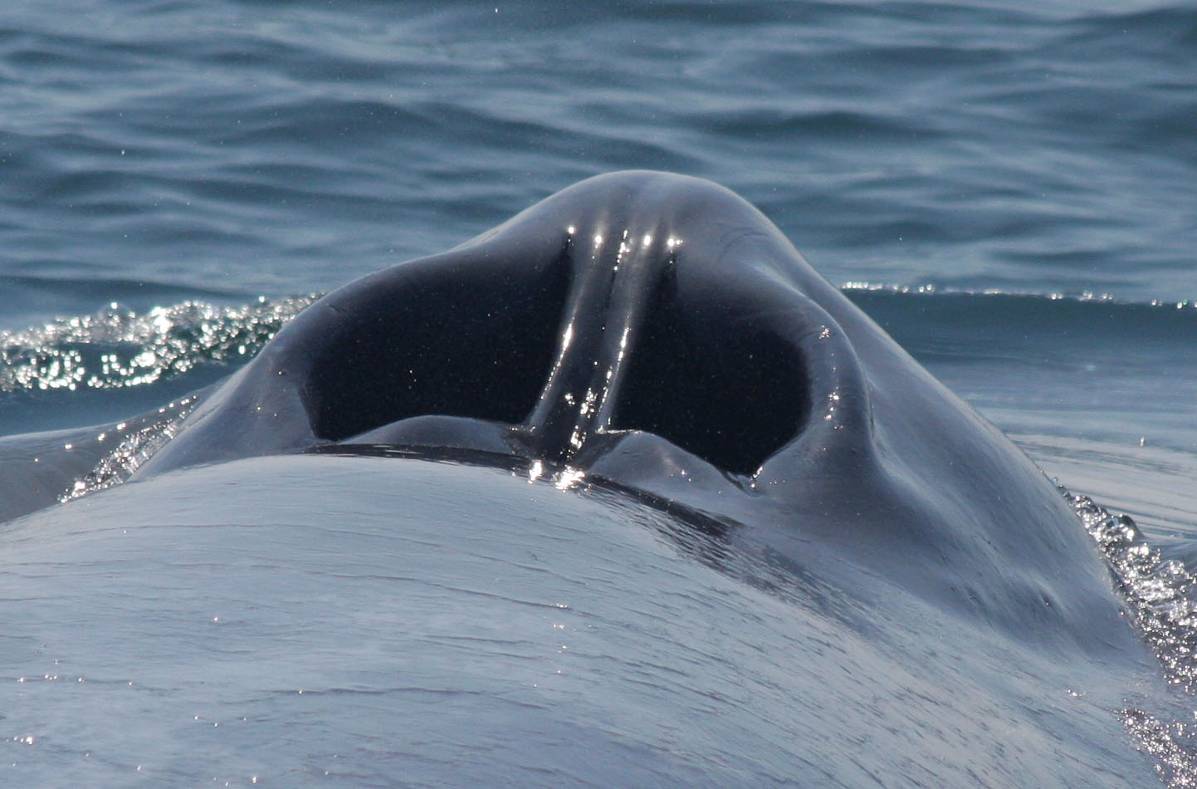
Another important feature of blue whales is their lungs. They are able to hold their breath for 1 hour and dive to a depth of 100 m. But, like other marine mammals, blue whales periodically emerge on the surface of the water to breathe. Climbing to the surface of the water, the whales use the breathing - breathing hole of two large holes (nostrils) on the back of the head. Whale exhalation through the spira is often accompanied by a vertical fountain of water up to 10 m high. Considering the peculiarities of the whale habitat, their lungs work much more efficiently than ours - light whales absorb 80-90% of oxygen, and ours only about 15%. The lung volume is about 3 thousand liters, in humans, this figure varies in the region of 3-6 liters.
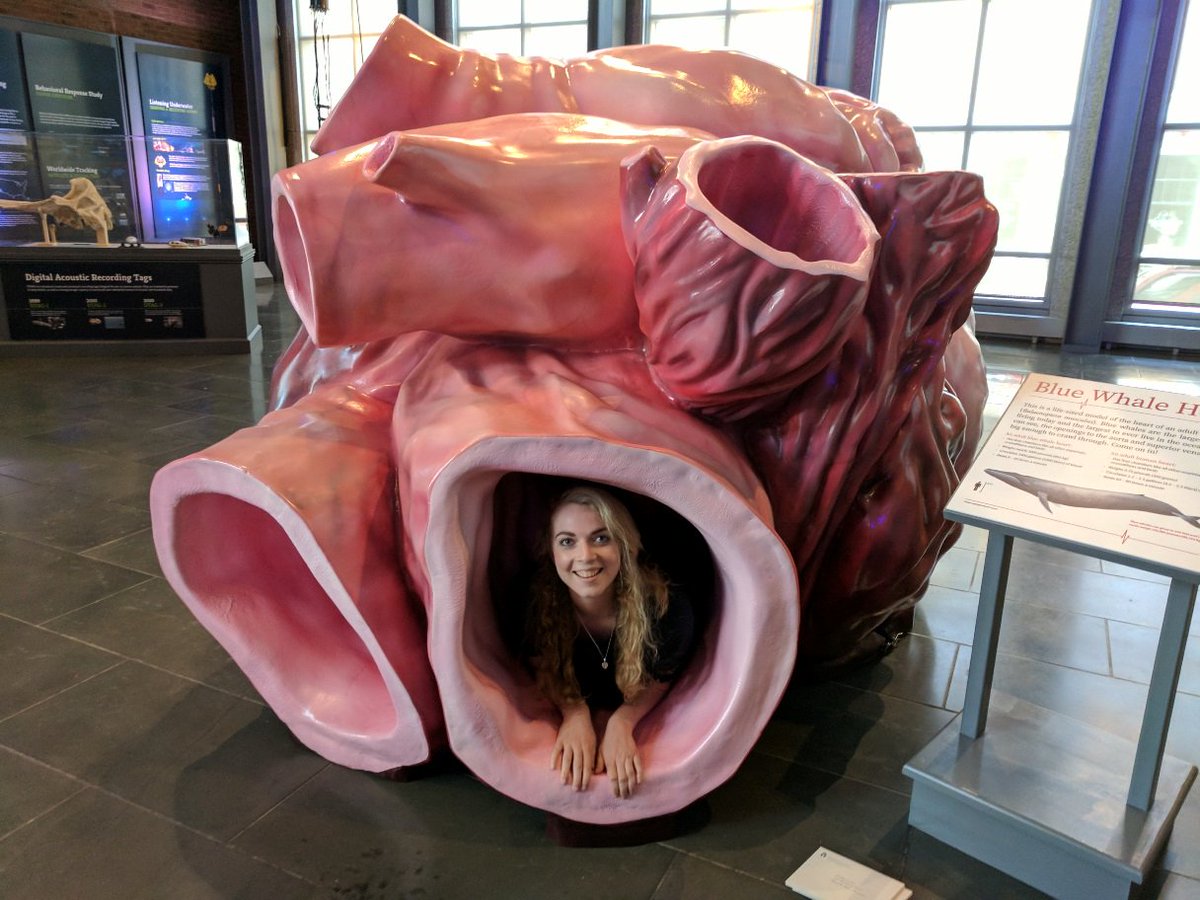
Blue whale heart model in a museum in New Bedford (USA).
The blue whale circulatory system is also full of record-breaking parameters. For example, their vessels are simply huge, the diameter of the aorta alone is about 40 cm. The heart of blue whales is considered the largest heart in the world and weighs about a ton. With such a big heart, the whale and blood have a lot - more than 8000 liters in an adult.
And so we gradually approached the essence of the study itself. The heart of the blue whale is large, as we already understood, but it beats quite slowly. Previously, it was believed that the pulse is about 5-10 beats per minute, in rare cases, up to 20. But no one has made accurate measurements, until now.
Scientists from Stanford University say that the scale in biology is of great importance, especially when it comes to determining the functional characteristics of the organs of living beings. The study of various creatures, from mice to whales, allows us to determine the limitations on dimensions that a living organism cannot exceed. And the heart and the cardiovascular system as a whole are important attributes of such studies.
In marine mammals, whose physiology is fully adapted to their lifestyle, adaptations associated with diving and holding your breath play an important role. It has been found that in many such creatures, during a dive, the heart rate decreases to levels below the resting state. And rising to the surface, the rhythm of the heart becomes more rapid.
A lowered heartbeat during diving is necessary to reduce the rate of oxygen delivery to tissues and cells, thereby depleting the process of depletion of oxygen reserves in the blood and reducing oxygen consumption by the heart itself.
There is a hypothesis that exercise (i.e. increased physical activity) modulates the response to immersion and increases the heart rate during immersion. This hypothesis is especially important for the study of blue whales, since, in view of a special feeding method (a sharp lunge for swallowing water), the metabolic rate, in theory, should be 50 times higher than the baseline value (resting state). It is suggested that such lunges accelerate the depletion of oxygen, therefore, reducing the duration of the dive.
An increased heart rate and increased oxygen transfer from blood to muscles during lunging can play an important role due to metabolic costs during such physical activity. In addition, it is worth considering the low concentration of myoglobin * (Mb) in blue whales (5-10 times lower than in other marine mammals: 0.8 g Mb per 100 g-1 muscle in blue whales and 1.8-10 g Mb in others marine mammals.
Myoglobin * is an oxygen-binding protein of skeletal muscles and heart muscles.As a conclusion, physical activity, depth of immersion and volitional control change the heart rate during immersion through the autonomic nervous system.
An additional factor in reducing the heart rate may be compression / expansion of the lungs during the dive / ascent.
Thus, the heart rate during immersion and while on the surface is directly related to the models of arterial hemodynamics.
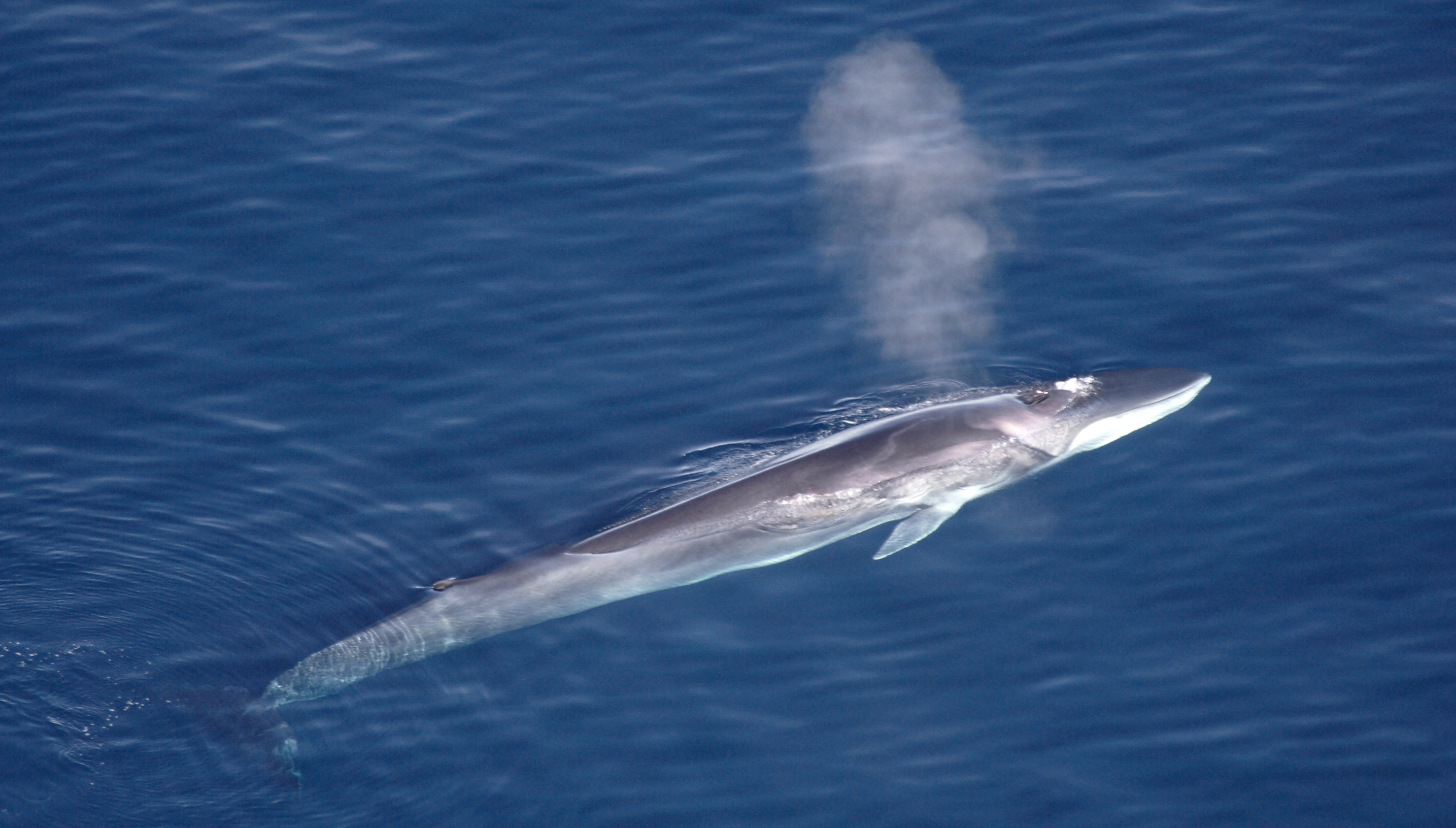
Finwal
A previous study of the biomechanical properties and sizes of the aortic walls of the finwal ( Balaenoptera physalus ) showed that during dives with a heart rate of ≤10 beats / min, the aortic arch realizes the effect of a reservoir ( Windkessel effekt ), which maintains blood flow for long diastolic periods * between heart contractions and reduces the pulsation of the blood flow into the stiff distal aorta.
Diastole * (diastolic period) - the period of relaxation of the heart between contractions.All the above hypotheses, theories, and conclusions must have material evidence, that is, be confirmed or disproved in practice. But for this you need to conduct electrocardiography to a freely moving blue whale. Simple methods will not work here, because scientists have created their own device for electrocardiography.
A video in which researchers briefly talk about their work.
The whale ECG was recorded using a custom-made ECG recorder built into a special capsule with 4 suction cups. Surface ECG electrodes were built into two of the suction cups. Researchers went by boat to Monterey Bay (Pacific Ocean, near California). When the scientists finally met a blue whale that emerged to the surface of the water, they attached an ECG recorder to his body (next to the left fin). According to previously collected data, this whale is a male at the age of 15 years. It is important to note that this device is non-invasive, that is, it does not require the introduction of any sensors or electrodes into the skin of the animal. That is, for a whale, this procedure is completely painless and with minimal stress from contact with people, which is also extremely important, given that the readings of the heartbeat are taken, which could be distorted due to stress. As a result, an 8.5-hour ECG record was obtained, according to which scientists were able to build a heart rhythm profile (image below).
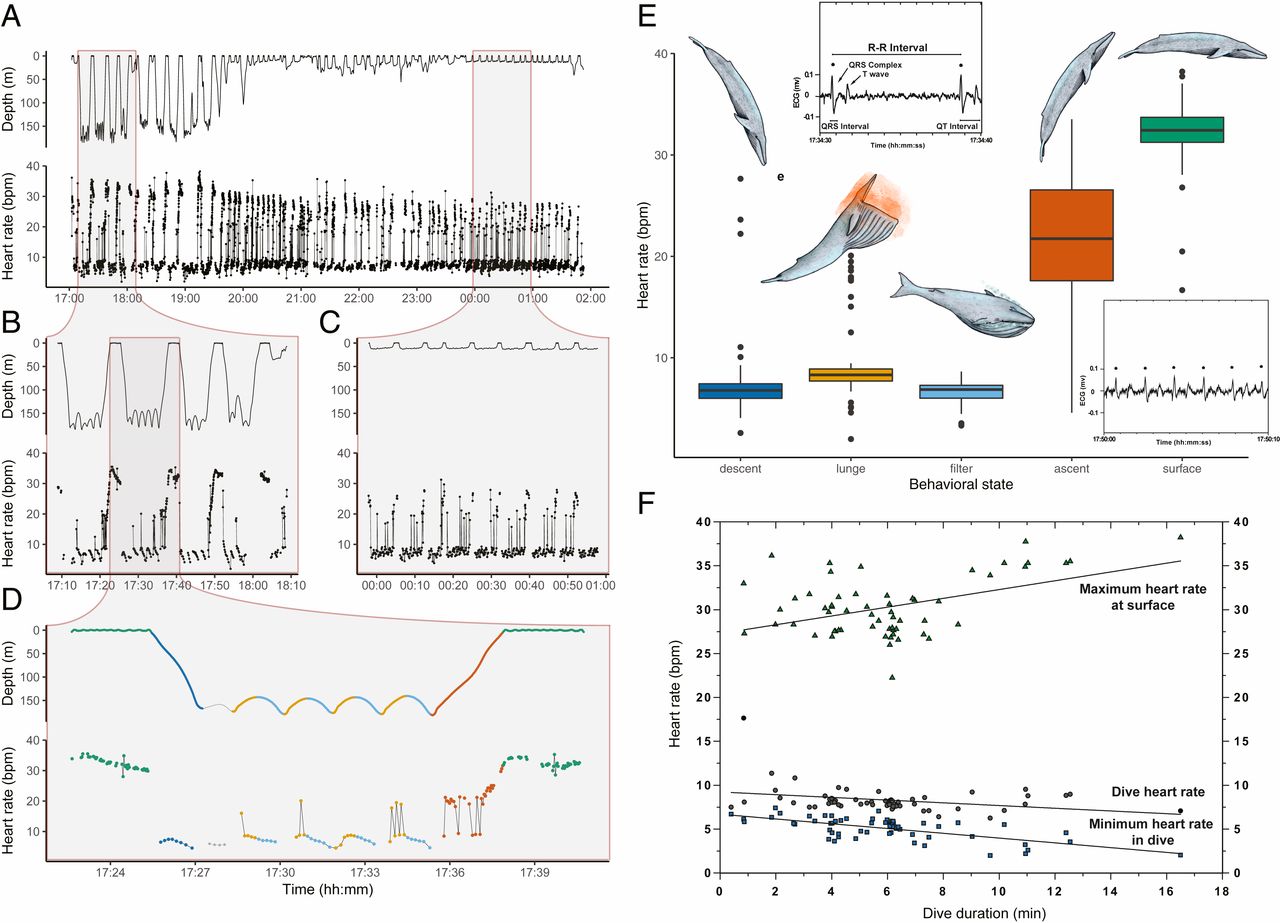
Image # 1: Blue Whale Heart Rate Profile.
The shape of the ECG signal was similar to that recorded in small whales in captivity using the same device. The behavior of the whale during the search for food was quite common for its appearance: diving for 16.5 minutes to a depth of 184 m and surface intervals from 1 to 4 minutes.
The heart rate profile, in accordance with the cardiovascular response to diving, showed that a heart rate of 4 to 8 beats per minute prevailed in the lower phase of dives when searching for food, regardless of the duration of the dive or the maximum depth. The dive heart rate (calculated over the entire duration of the dive) and the minimum instantaneous heart rate during the dive decreased with the duration of the dive, while the maximum surface heart rate after the dive increased with the duration of the dive. That is, the longer the whale was under water, the slower the heart beat during the dive and the faster after the ascent.
In turn, allometric equations for mammals state that a whale weighing 70,000 kg has a heart weighing 319 kg, and its stroke volume (the volume of blood ejected per stroke) is about 80 l, therefore, the resting heart rate should be 15 beats / min
During the lower phases of dives, the instantaneous heart rate ranged from 1/3 to 1/2 of the predicted resting heart rate. However, the heart rate increased during the ascent phase. At surface intervals, the heart rate was approximately two times higher than the predicted resting heart rate and predominantly varied from 30 to 37 beats per minute after deep dives (> 125-meter depth) and from 20 to 30 beats per minute after smaller dives.
This observation may indicate that acceleration of heart contractions is necessary to achieve the desired respiratory gas exchange and reperfusion (restoration of blood flow) of tissues between deep dives.
Shallow short-term night dives were associated with relaxation and, therefore, are more characteristic of a less active state. Typical heart rates observed with a 5-minute night dive (8 beats per minute) and the accompanying 2-minute surface interval (25 beats per minute) can together lead to a heart rate of about 13 beats per minute. This figure, as we can see, is surprisingly close to the calculated predictions of allometric models.
Next, scientists built profiles of heart rate, depth and relative lung volume of 4 separate dives, the analysis of which allowed us to study the potential effect of physical activity and depth on the regulation of heart rhythm.
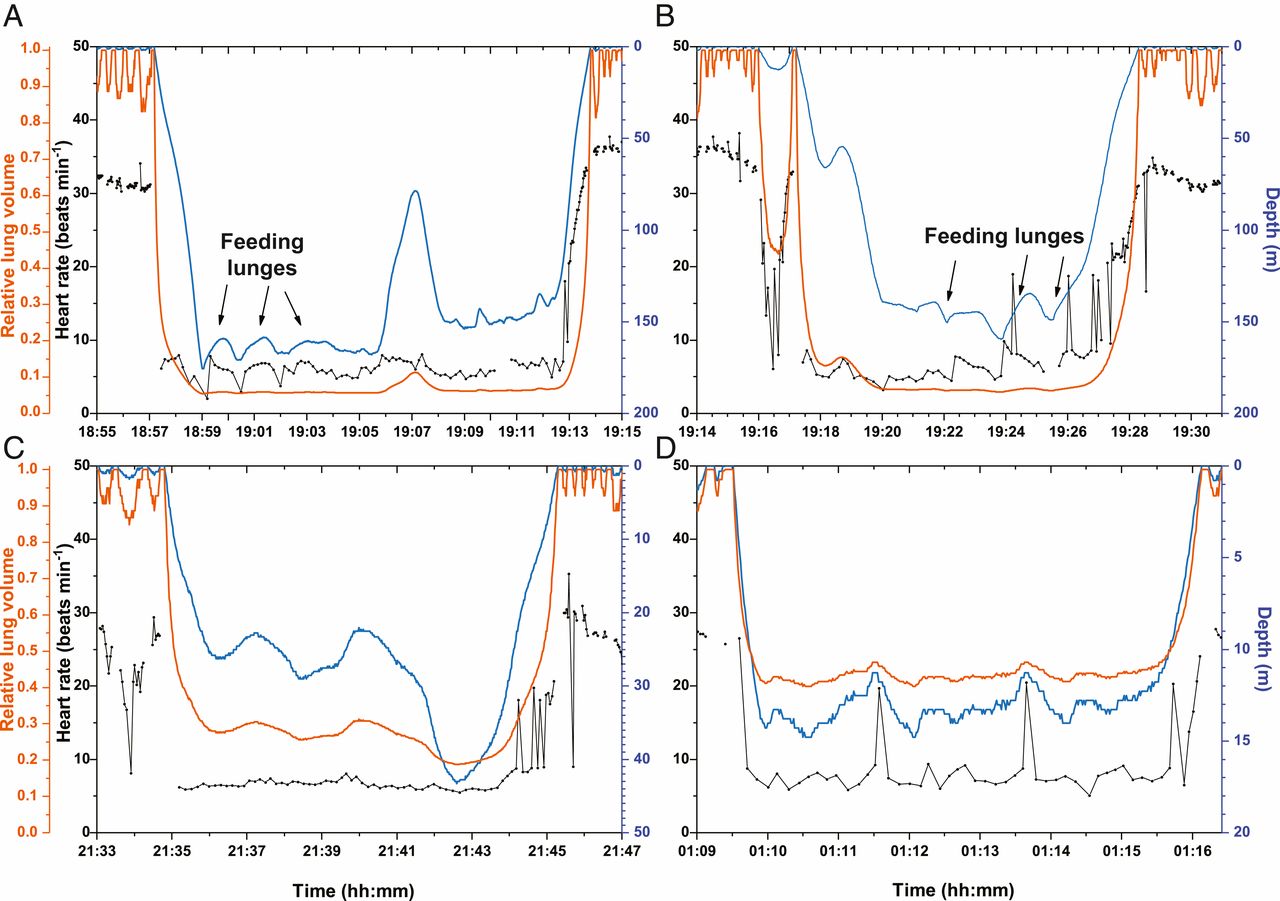
Image No. 2: profiles of heart rate, depth and relative lung volume 4 separate dives.
While eating food at great depths, the whale performs a certain lunge maneuver - sharply opens its mouth for swallowing water with plankton, and then filters out the food. It was noted that the heart rate at the time of ingestion of water is 2.5 times higher than at the time of filtration. This directly indicates the dependence of the heart rate on physical activity.
As for the lungs, their effect on the heart rhythm is extremely unlikely, since no significant changes in the relative volume of the lungs were observed during the considered dives.
Moreover, in the lower phases of shallow dives, a short-term increase in heart rate was associated precisely with changes in the relative volume of the lungs and could be caused by activation of the lung stretch receptor.
Summing up the above observations, scientists came to the conclusion that during feeding at great depths there is a brief increase in heart rate by 2.5 times. However, the average peak heart rate during lunges at the time of feeding was still only half the predicted value at rest. These data are consistent with the hypothesis that the flexible aortic arches of large whales realize the reservoir effect during a slow heart rate during the diving period. In addition, the range of higher heart rate after immersion confirmed the hypothesis that the aortic impedance and heart load decrease during the surface interval due to destructive intervention of outgoing and reflected pressure waves in the aorta.
The strong bradycardia that the researchers observed can be called an unexpected result of the study, given the enormous cost of whale forces to lunge during swallowing water with plankton. However, the metabolic cost of this maneuver may not correspond to heart rate or convective oxygen transport, in part because of the short duration of feeding and the possible involvement of glycolytic, rapidly contracting muscle fibers.
During the attack, blue whales accelerate to a high speed and absorb a volume of water, which may be larger than their own body. Scientists suggest that the high resistance and energy needed to maneuver quickly deplete the total oxygen supply in the body, thereby limiting the time of immersion. The mechanical force required to absorb large volumes of water is likely to far exceed aerobic metabolic strength. That is why, during such maneuvers, the heart rate, although it increased, but for a very short time.
For a more detailed acquaintance with the nuances of the study, I recommend that you look into the report of scientists .
Epilogue
One of the most important conclusions is that for gas exchange and reperfusion during short surface intervals, blue whales require an almost maximum heart rate, regardless of the nature of the depletion of oxygen in the blood and muscles during diving. If we take into account that larger individuals of blue whales need to invest more work for a shorter period of time (in accordance with the hypotheses of allometry), then they will inevitably encounter several physiological limitations both during the dive and during the surface interval. This means that their body size is evolutionarily limited, since if it were larger, the process of obtaining food would be very costly and would not be compensated for by the food received. Researchers themselves believe that the heart of a blue whale works to the limit of its capabilities.
In the future, scientists plan to expand the capabilities of their device, including adding an accelerometer in order to better understand the effect of different physical activities on heart rate. They also plan to use their ECG sensor on other marine life.
As this study showed, being the biggest creature with the biggest heart is not so simple. Nevertheless, no matter what size the marine inhabitants are, no matter what diet they adhere to, we need to understand that the thickness of the water that people use for fishing, production and transportation remains their home. We are only guests, and therefore must behave accordingly.
Friday off-top:
Rare footage in which a blue whale demonstrates the spaciousness of its mouth.
Another giant of the seas is the sperm whale. In this video, scientists using a remotely controlled ROV Hercules at a depth of 598 meters photographed a curious sperm whale.
Rare footage in which a blue whale demonstrates the spaciousness of its mouth.
Another giant of the seas is the sperm whale. In this video, scientists using a remotely controlled ROV Hercules at a depth of 598 meters photographed a curious sperm whale.
Thank you for your attention, stay curious and have a great weekend everyone, guys! :)
Thank you for staying with us. Do you like our articles? Want to see more interesting materials? Support us by placing an order or recommending to your friends, cloud VPS for developers from $ 4.99 , a 30% discount for Habr users on a unique analog of entry-level servers that was invented by us for you: The whole truth about VPS (KVM) E5-2650 v4 (6 Cores) 10GB DDR4 240GB SSD 1Gbps from $ 20 or how to share a server? (options are available with RAID1 and RAID10, up to 24 cores and up to 40GB DDR4).
Dell R730xd 2 times cheaper? Only we have 2 x Intel TetraDeca-Core Xeon 2x E5-2697v3 2.6GHz 14C 64GB DDR4 4x960GB SSD 1Gbps 100 TV from $ 199 in the Netherlands! Dell R420 - 2x E5-2430 2.2Ghz 6C 128GB DDR3 2x960GB SSD 1Gbps 100TB - from $ 99! Read about How to Build Infrastructure Bldg. class c using Dell R730xd E5-2650 v4 servers costing 9,000 euros for a penny?